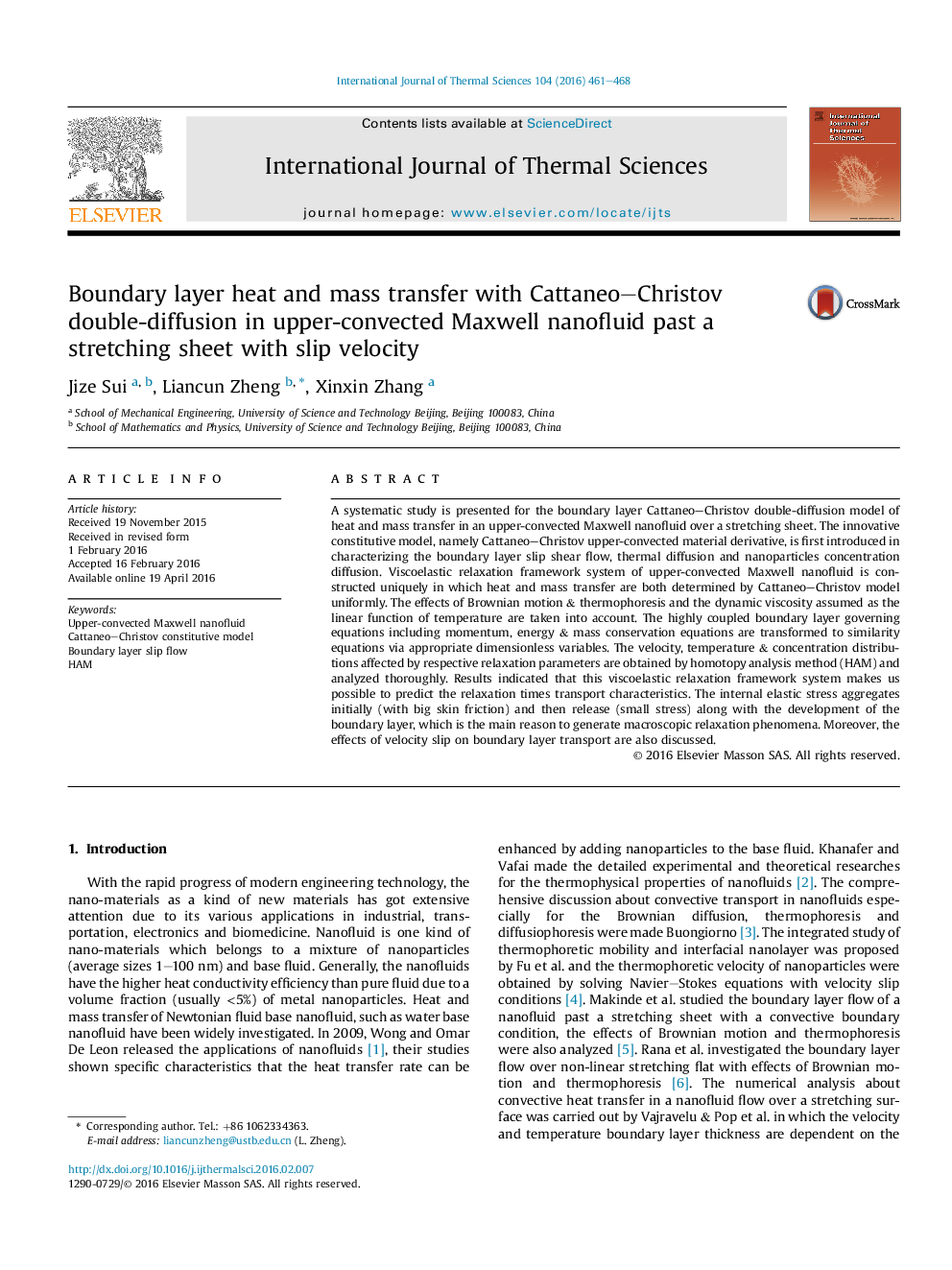| کد مقاله | کد نشریه | سال انتشار | مقاله انگلیسی | نسخه تمام متن |
|---|---|---|---|---|
| 667901 | 1458718 | 2016 | 8 صفحه PDF | دانلود رایگان |
• The upper-convected Maxwell nanofluid over a stretching sheet with slip boundary is presented.
• The Cattaneo–Christov model is introduced in characterizing heat and mass transfer laws.
• Brownian motion and thermophoresis are considered, the similarity equations are solved analytically by HAM.
• Results show the obvious relaxation characteristics for velocity, temperature and concentration fields.
A systematic study is presented for the boundary layer Cattaneo–Christov double-diffusion model of heat and mass transfer in an upper-convected Maxwell nanofluid over a stretching sheet. The innovative constitutive model, namely Cattaneo–Christov upper-convected material derivative, is first introduced in characterizing the boundary layer slip shear flow, thermal diffusion and nanoparticles concentration diffusion. Viscoelastic relaxation framework system of upper-convected Maxwell nanofluid is constructed uniquely in which heat and mass transfer are both determined by Cattaneo–Christov model uniformly. The effects of Brownian motion & thermophoresis and the dynamic viscosity assumed as the linear function of temperature are taken into account. The highly coupled boundary layer governing equations including momentum, energy & mass conservation equations are transformed to similarity equations via appropriate dimensionless variables. The velocity, temperature & concentration distributions affected by respective relaxation parameters are obtained by homotopy analysis method (HAM) and analyzed thoroughly. Results indicated that this viscoelastic relaxation framework system makes us possible to predict the relaxation times transport characteristics. The internal elastic stress aggregates initially (with big skin friction) and then release (small stress) along with the development of the boundary layer, which is the main reason to generate macroscopic relaxation phenomena. Moreover, the effects of velocity slip on boundary layer transport are also discussed.
Journal: International Journal of Thermal Sciences - Volume 104, June 2016, Pages 461–468
